The Q60T and the Q70T are two of Samsung’s most popular QLED TVs on the market, and they come with many similar properties. That said, the two models differ in several aspects. Most notably, they differ in image processing capabilities, motion technology, and gaming features. Read this Samsung Q60T vs Q70T comparison page to learn helpful information that will help you pick the more suitable model.
Samsung Q60T vs Q70T – Quick Comparison
Samsung Q60T
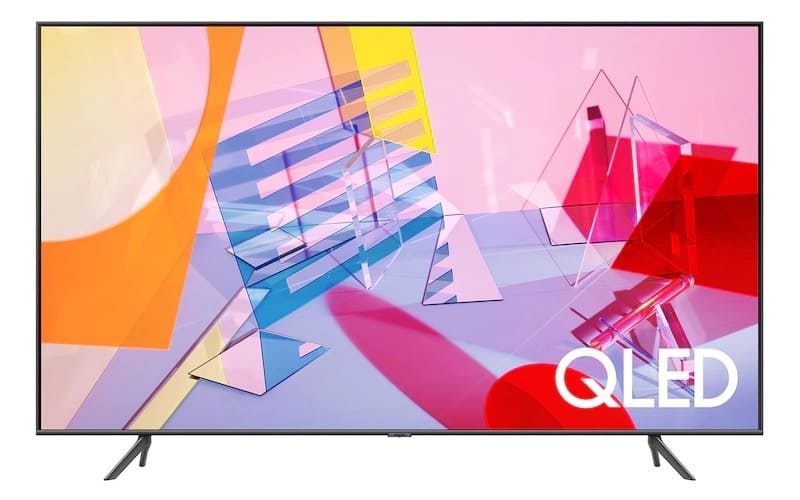
As the cheapest option among Samsung’s QLED models, the Q60T aims to provide a well-balanced TV set for mixed usage at an affordable price. Let’s take a look at Q60T’s biggest strengths and weaknesses:
Pros:
- Excellent Smart TV platform
- Capable and convenient voice assistant
- Great price for its specs
- Exceptional native contrast ratio
Cons:
- 60 Hz panels only
- No VRR, G-SYNC, and FreeSync
Samsung Q70T
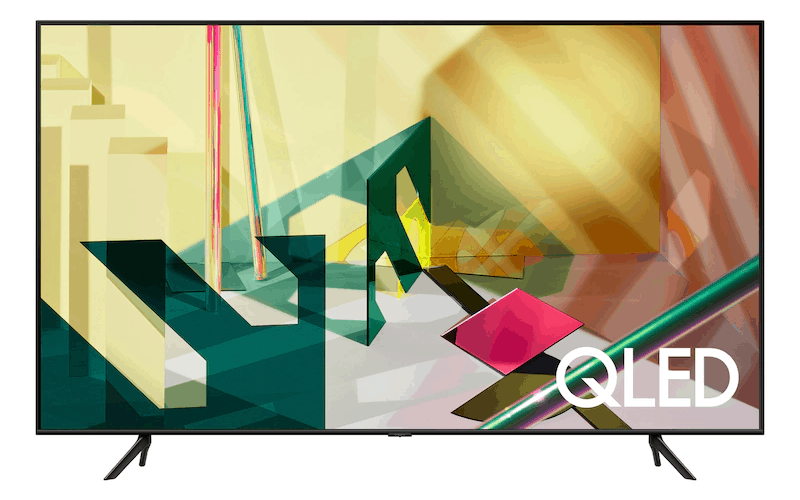
Delivering excellent image quality, splendid gaming features, and powerful image upscaling abilities, the Q70T is an appealing choice for gamers and streamers alike. Here are Q70T’s most significant pros and cons:
Pros:
- Excellent Smart TV platform
- Capable and convenient voice assistant
- Powerful 4K Quantum Processor
- VRR, G-SYNC, and FreeSync
Cons:
- Poor viewing angles
- No local dimming feature
Features Face to Face
Panel Technology
The Q60T and the Q70T both employ the same LED VA panel technology. In this particular case, the two TVs use Samsung’s in-house QLED technology. This stands for quantum dot light-emitting diode. In simple terms, what differentiates QLED panels from all other TV panels is that QLED ones have a quantum dot layer built into the display.
QLED panels are generally much lighter than other LED panels. They can also get significantly brighter and have an excellent contrast ratio. Conversely, they provide poor viewing angles and struggle to produce rich and saturated blue tones.
Image Processor
The Q70T has a better image processor than the Q60T, as it’s equipped with the excellent 4K Quantum Processor. This impressive processor automatically optimizes the picture and upscales the image quality to deliver a more immersive experience.
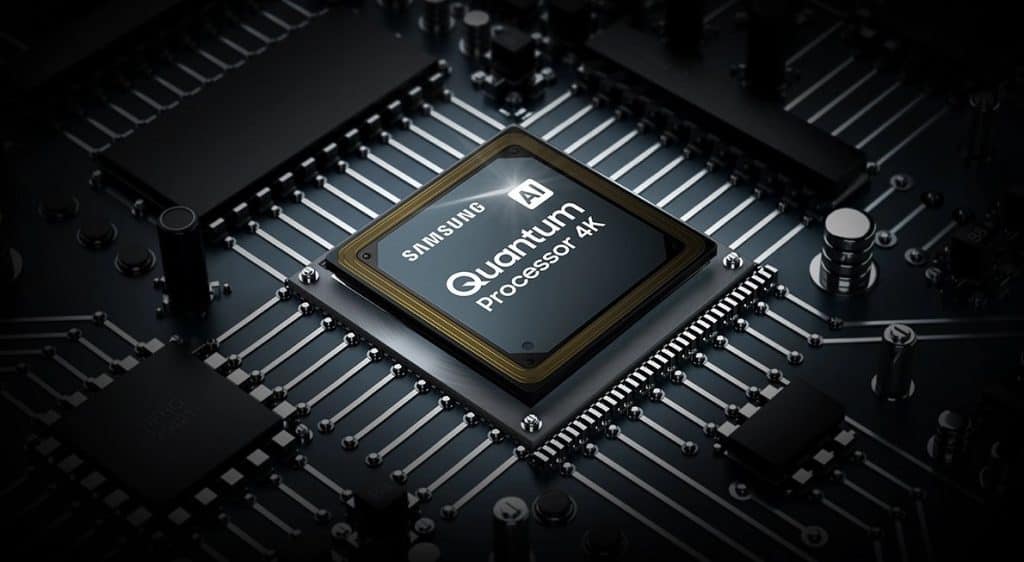
The Q60T TV comes with the 4K Quantum Processor Lite chipset. This processor is not as capable as the one that comes with the Q70T. But, it’s still powerful enough to optimize color properties and master HDR content, properties that are very useful when you’re streaming online content in 4K.
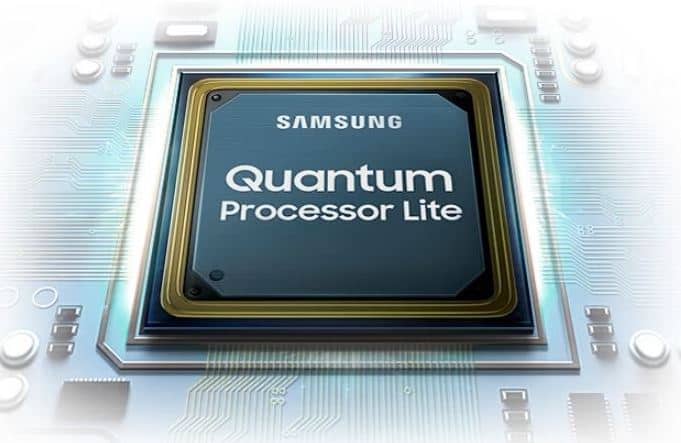
Related: Our Samsung Q60A vs Q70A comparison
Motion Technology
The Q70T has slightly better motion technology than the Q60T, as it delivers faster response times. The Q70T can fully transition between scenes in fifteen milliseconds, while the Q60T does so in just over eighteen milliseconds.
Still, both TVs can be a bit slower with specific transitions. This sometimes results in faint trails and blur behind fast-moving objects or when transitioning between scenes. If you find these numbers unsatisfactory, your best bet would be to go with the Q80T, which significantly outperforms the two models we’re comparing on this page.
Picture Quality
For a casual buyer, the overall picture quality is almost synonymous with supported resolutions. While many other attributes separate a good TV from a mediocre one, supported resolutions are still one of the most important characteristics of every TV. For this reason, we’ve drafted this detailed Samsung Q60T vs Q70T comparison table to provide you with a complete overview of the two TV’s supported resolutions:
| Resolution | Q60T | Q70T |
|---|---|---|
| 4K/120Hz | No | Yes (Native Support) |
| 4K/60Hz/4:4:4 | Yes | Yes |
| 4K/60Hz | Yes | Yes |
| 1440p/120Hz | No | Yes (Native Support) |
| 1440p/60Hz | Yes (Native Support) | Yes (Native Support) |
| 1080p/120Hz | No | Yes (Native Support) |
| 1080p/60Hz/4:4:4 | Yes | Yes |
From the table above, you can see that there is one significant difference between the two TVs. The Q70T can display all standard resolutions up to 4K and even deliver 4K at 120 Hz without any issues. In comparison, the Q60T supports most resolutions but can only do so at 60 Hz.
Contrast Ratio / Black Level
The Q60T and the Q70T have an equally exceptional native contrast ratio. Moreover, these two TVs outperform the flagship Q80T in this category. They are equally capable of displaying deep blacks, which is expected from a VA panel.
Unfortunately, neither TV can improve its native contrast numbers, as the Q60T and the Q70T don’t have a local dimming feature. This brings us to the next essential part of this comparison page.
Local Dimming
The two TVs are edge-lit, making them inferior performers compared to other Samsung TVs with full-array backlights. What’s more, neither the Q60T nor the Q70T has a local dimming feature.
Instead, these two TVs come with a micro dimming feature called “Supreme UHD Dimming.” This is a software-based technology that automatically adjusts the contrast of images over the screen zones. While full-array local dimming is significantly better than micro dimming, at least these two TVs have some sort of dimming option.
Peak Brightness
Peak brightness is one of the critical factors to consider if you plan to set your new TV in a well-lit environment. In this regard, the Q60T and the Q70T are equally consistent, with the latter model having a slight edge when it comes to SDR brightness. Check out our concise table below to see how the two models compare in terms of peak brightness:
| Brightness Values | Q60T | Q70T |
|---|---|---|
| Peak 10% Window SDR Brightness | ∼ 470 nits | ∼ 500 nits |
| Peak 100% Window SDR Brightness | ∼ 470 nits | ∼ 500 nits |
| Peak 10% Window HDR Brightness | ∼ 490 nits | ∼ 490 nits |
| Peak 100% Window HDR Brightness | ∼ 490 nits | ∼ 490 nits |
For reference, good values for SDR brightness is over 360 nits, and HDR is over 650 nits. As you can see from the table above, the Q60T and the Q70T deliver excellent SDR brightness and mediocre HDR brightness.
But, what’s even more impressive about these numbers is just how stable these two TVs are in delivering peak brightness across their entire displays.
This is particularly noticeable with the two TVs’ HDR brightness. Although they have equally mediocre peak HDR brightness numbers, they manage to keep the same brightness levels on the entire surface as they do on small portions of the screen.
Color
The Q60T and the Q70T both come with the option to enable wide color gamuts. This is especially important for delivering uncompromising HDR content. The two TVs also have almost indistinguishable coverage characteristics of the most common color spaces. They excel at covering the DCI P3 color space and offer decent coverage of the wider Rec. 2020 color space.
At the same time, both TVs produce okay color volume and have the same strengths and weaknesses on this front. More specifically, the Q60T and the Q70T can produce dark and saturated colors very well, but they struggle to display brighter colors.
Viewing Angle
As we’ve discussed above, both the Q60T and the Q70T utilize LED VA panel technology, so they deliver comparatively inadequate viewing angles in contrast to other panel types. So whether you pick the Q60T or the Q70T, you can expect poor viewing angles that make these two TVs unsuitable for wider seating arrangements.
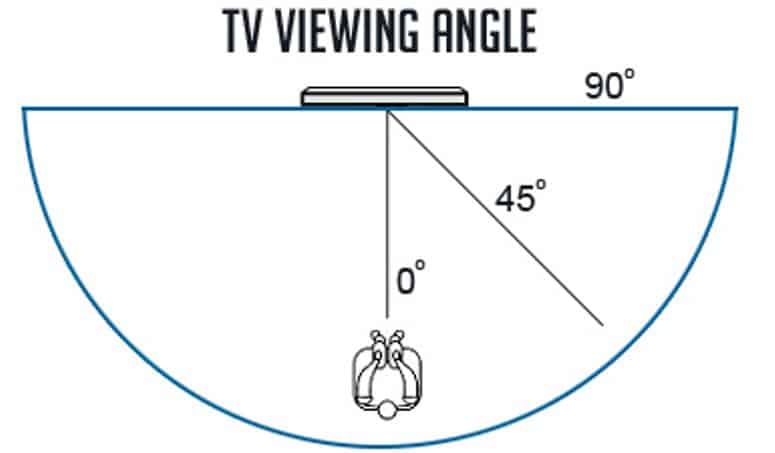
Both TVs start displaying brightness loss at a viewing angle of just over thirty degrees and gamma shifts at twice as lower angles. As a result, images will start looking washed out and quickly lose their sharpness even when you move just a couple of feet to the side.
Reflections / Anti-glare
The Q60T and the Q70T have a semi-gloss finish, meaning they have nearly identical reflection handling properties. Both TVs reflect just over five percent of the total light that hits their screens to put this into numbers. They also reflect well under one percent of all indirect reflections.
Considering this, the two TVs can perform very well in moderately lit and well-lit rooms, as they handle indirect lighting excellently. However, they might underperform in rooms with several windows or if placed directly across a window.
Sound Quality
The Q60T delivers a solid and well-balanced sound profile with decent bass. It provides good sound quality at moderate listening levels. On the other hand, the Q70T has better sound properties, as it comes with Intelligent Adaptive Sound+. It gives this model the edge over the Q60T, as the Q60T doesn’t have a room correction feature.
The two TVs can get reasonably loud, more than their R Series counterparts. Overall, the Q70T offers slightly better sound quality characteristics. This is primarily because it has lower range dynamic compression and a bit higher maximum volume.
Smart TV Platform (Operating System)
The two TVs use the 2020 version of Samsung’s Tizen Smart TV platform. In other words, it means that they have identical Smart TV performance properties. The 2020 Tizen OS version is not the smoothest Smart TV platform on the market but is relatively easy to navigate and loads most apps within a couple of seconds.
This Smart TV platform comes loaded with advanced options and settings. Additionally, it includes a great selection of apps. This includes YouTube and Netflix, which allow you to play HDR content in their native apps.
Connectivity
While the Q60T and the Q70T have distinct differences, they are similar in many essential performance features. And, nowhere is this as visible as it is when comparing the two TVs’ connectivity properties. This is because the Q60T and the Q70T have the same voice assistant and wireless technology features, with some negligible input differences.
Overall, the Q60T and the Q70T deliver great all-around connectivity features. With that in mind, let’s take a closer look at the voice assistant, wireless technologies, and input specifications to determine all of the key connectivity features of these two TVs.
Inputs
The Q70T is marginally better in this category, as it offers slightly more input options. The two deliver equally impressive results in input lag, especially when you enable Game mode or the Game Motion Plus feature. Here’s a quick comparison table of the two TVs’ key input features:
| Input Ports | Q60T | Q70T |
|---|---|---|
| HDMI Ports | 3 HDMI 2.0 Ports | 4 HDMI 2.0 Ports |
| USB Ports | 2 USB 2.0 Ports | 2 USB 2.0 Ports |
| Digital Optical Audio Out | 1 Port | 1 Port |
| Ethernet Port | Yes | Yes |
Voice Assistants
The Q60T and the Q70T come with the same remote as other modern Samsung QLED TVs. With that in mind, they utilize the same SamsungSmartThings remote app and the same voice assistant.
Samsung’s Bixby voice assistant is easy to set up and activate out of the box and is one of the more capable Smart TV voice assistants around. Bixby enables you to control a multitude of options through its voice control features. Some of the most interesting ones include accessing apps, changing picture and input settings, switching between channels, and adjusting the volume.
Wireless Technologies
Similar to the previous category, there’s not much room for differentiation on the subject of wireless technologies. The two TVs support the standard wireless technology (2.4GHz and 5GHz). Additionally, they offer Bluetooth connectivity features, allowing you to connect a Bluetooth speaker or headphones when watching content or listening to music.
Standout Features
Although the two TVs don’t have many dissimilarities, the Q70T does have some standout features, those that will mainly interest gamers looking for a good TV for HDR gaming. The Q70T is both FreeSync and G-SYNC compatible, while the Q60T doesn’t support either of the two implementations.
The Q70T has a 120 Hz native refresh rate, and a VRR (Variable Refresh Rate) feature, while the Q60T lacks this trait and has a refresh rate of just 60 Hz. Meaning the Q70T can refresh frames twice as fast and synchronize its refresh rate to minimize screen tears or image stutters.
Conclusion
Ultimately, while these two TVs share many identical features, you can make a distinction through a few key traits. If you’re working with a tight budget but still want to get the celebrated Samsung QLED quality, the Q60T is an excellent entry-level choice. It offers good image quality, decent audio, and fast and intuitive Smart TV features.
In this Samsung Q60T vs Q70T, the Q70T is a stronger performer in several key areas. It comes with a more powerful processor, more capable motion technology, and slightly better sound quality. Plus, it has a handful of gaming features that aren’t available on the Q60T.
RELATED: See our Q70T vs Q80T Comparison